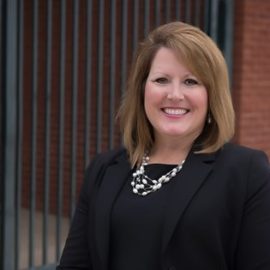CARES Act: Small Business Act (SBA) Loan Provisions
briefing by Kim Ripberger
Coronavirus Aid, Relief, and Economic Security Act
On Friday, March 27, 2020, President Trump signed the “Coronavirus Aid, Relief, and Economic Security Act” (CARES Act) into law. This law marks the single largest economic stimulus package in history and is intended to provide relief to the many businesses and individuals impacted by COVID-19.
We will be continually monitoring additional guidance as it is released and will provide updated information on this page as it becomes available, so please check back often. In addition, please feel free to reach out to your BRC advisor with any questions you may have.
Title I, Keeping American Workers Paid and Employed Act of the CARES Act provides financial resources to help sustain small businesses with less than 500 employees, including sole proprietorships and nonprofit organizations during these unprecedented times. In addition, a business with more than one physical location that employees not more than 500 employees per physical location that is assigned the North American Industry Classification System code beginning with 72, Accommodation and Food Services is eligible for the available financial resources under Title I.
Interim Final Rule 13 CFR Part 120, Business Loan Program Temporary Changes; Paycheck Protection Program was issued on April 2, 2020 for immediate implementation of the program.
Eligible organizations can apply for “paycheck protection loans” that are fully guaranteed by the Federal Government through December 31, 2020 (returning to an 85% guarantee for loans greater than $150,000 after that date) as long as they commit to using at least 75% of the loan proceeds for payroll costs as defined below.
The paycheck protection loans are generally limited to the lesser of:
- the sum of average monthly “payroll costs” for the one-year period ending on the date the loan was made (an alternative calculation is available for seasonal employers) multiplied by 2.5, and any Emergency Government Disaster Loan (see below) taken out after January 31, 2020 that has been refinanced into a paycheck protection loan, or
- $10 million.
Payroll costs** consist of compensation to employees whose principal place of residence is in the U.S. and include the sum of the following:
- wages, commissions, salary, or similar compensation to an employee,
- payment of a cash tip or equivalent,
- payment for vacation, parental, family, medical or sick leave,
- allowance for dismissal or separation,
- payment for group health care benefits, including premiums,
- payment of any retirement benefits, and
- payment of state or local tax assessed on the compensation of employees.
** The uncertainty that previously existed regarding the inclusion of various costs was clarified through U.S Department of the Treasury’s issuance of the Paycheck Protection Program Loan Frequently Asked Questions (“FAQ”).
- Any costs paid to independent contractors or sole proprietors should be excluded from the loan applicant’s payroll costs. However, the sole proprietors or independent contractors can be eligible to apply separately if applicable requirements are satisfied.
Payroll costs exclude the following:
- the compensation of any individual employee in excess of an annual salary limitation of $100,000, **
- payroll taxes, **
- any compensation of an employee whose principal place of residence is outside the U.S., or
- any qualified sick leave or family medical leave for which a credit is allowed under the new Coronavirus Relief Act passed last week.
- **FAQ – The in excess of $100,000 annual salary limitation only applies to cash compensation. It does not apply to non-cash benefits including employer paid group health insurance coverage, retirement contributions, and payment of state and local taxes assessed on employee compensation.
The payroll protection loan benefits are highlighted in the following example.
Cara’s Cookie Company applies for a paycheck protection loan on May 1, 2020. The Company had $2.25 million in payroll costs for the prior year (May 1, 2019 – May 1, 2020), resulting in a $187,500 average per month payroll cost.
Assuming that the fully guaranteed federal loan is made prior to December 31, 2020, Cara’s Cookie Company is eligible to receive a payroll protection loan equal to the lesser of $468,750 (2.5 X $187,500 monthly average in payroll costs) or $10 million.
A payroll protection loan will have a maturity of 2 years bearing an interest rate of 100 basis points or one percent based on the guidance published in 13 CFR. Part 120 on April 2, 2020.
The loan proceeds may be used to cover the following business expenses: payroll; costs related to group health care benefits; employee salaries, commissions, or similar compensation; mortgage payments; rent (including rent under a lease agreement); utilities, and any other debt service requirements.
No personal guarantee is required by the loan applicant. Also, Section 7 of the Small Business Act standard fees are waived.
Borrowers will have a six-month payment deferral after disbursement. However, interest will accrue during the payment deferral.
Previously-discussed benefits concerning the PPP loan’s eligibility to be forgiven on a tax-free basis under Section 1106 of the CARES Act were eroded with the issuance of the Internal Revenue Service’s (“IRS”) Notice 2020-32 on April 30, 2020. One of BRC’s Tax Partners, Ron Kuyath, CPA discussed the implications related to Notice 2020-32. Click: Expenses Paid with PPP Loan Proceeds are Nondeductible for Tax Purposes
The amount forgiven can include the entire Paycheck Protection Program loan plus accrued interest. Please remember the expenses associated with the forgiveness are not deductible for tax purposes as noted in IRS Notice 2020-32.
The maximum amount eligible for forgiveness includes the sum of the following payments paid over the eight-week covered period that begins on the date that the loan proceeds are received:
- At least 75% of the loan proceeds must go to payroll costs (as defined above),
- The balance of the loan proceeds will be eligible for forgiveness if used in one of the following manners:
- Mortgage interest for loans originating prior to February 15, 2020,
- Rent payment on leases entered into prior to February 15, 2020, and
- Utility payments under service agreements dated prior to February 15, 2020.
A borrower must submit to the lender an application that includes documentation verifying the number of employees and pay rates, and cancelled checks showing mortgage interest, rent, or utility payments in order to seek debt forgiveness.
To further highlight the financial resources that are available to eligible organizations under Title I of the CARES Act, during the first eight weeks that Cara’s Cookie Company borrows $468,750 as mentioned in the above example, the Company expends $350,000 in payroll costs, mortgage interest, and utility payments. The Company is now eligible to have $350,000 of the $468,750 of the payroll protection loan forgiven. More importantly, the debt forgiveness income will not create taxable income for the Company. Plus, any remaining loan payments on the outstanding amount of $118,750 will not become due for six months as a result of the CARES Act deferment rules.
The amount of the loan provision that may be forgiven is decreased if the borrower either reduces its workforce during the eight-week covered period when compared to other periods in either 2019 or 2020, or reduces the salary or wages paid to an employee who had earned less than $100,000 in annualized salary by more than 25% during the eight-week covered period.
This loan forgiveness reduction can be avoided, however, if the borrower rehires or increases the employee’s pay within an allotted time period, beginning on February 15, 2020 and ending on the date that is 30 days after the enactment of the CARES Act.
Macomb, Julia M., McLaughlin P.A., Norris, “Inside the CARES Act: COVID-19 Loan Forgiveness Relief – a Section 1106 Primer” The National Law Review, Sunday, March 29, 2020.

NOTE:
- Formula can only reduce the amount forgiven not increase it.
- Employers with seasonal employees will have to use a slightly different formula.
- Reduction formula does not consider if employer rehires the employees or increases salaries prior to June 30, 2020.
- Amount forgiven is excluded from Taxable Income under the CARES Act.
Section 1110 of the CARES Act, Emergency Government Disaster Loan and Grant expands access to Economic Injury Disaster Loans under Section 7(b)(2) of the Small Business Act to include not only businesses with fewer than 500 employees, sole proprietors with or without employees or as an independent contractor, an ESOP as defined in Section 3 of the Small Business Act with not more than 500 employees, or a tribal small business concern with not more than 500 employees.
Economic Injury Disaster Loans in the amount below $200,000 that are made before December 31, 2020 will not require personal guarantees. A disaster loan can be taken out between January 31, 2020 and the dates on which a paycheck protection loan is available for reasons “other than paying payroll costs.” Any loan for payroll purposes will be restricted to the paycheck protection loan as described above.
In addition, section 1110 of the CARES Act creates a new Emergency Grant to allow a business that has applied for a disaster loan to receive an immediate advance up to $10,000. This grant can be used for the following expenses: paid sick leave for employees unable to work due to the direct effect of COVID-19; payroll costs to maintain employees; increased costs to obtain materials unavailable from the grant applicant’s original source because of interrupted supply chains: rent or mortgage payments; or repaying obligations that cannot be met due to revenue decline. This grant is not required to be repaid, even if the borrower’s request for a 7(b)(2) loan of the Small Business Act is denied.
Section 1112 of the CARES Act, Subsidy for Certain Loan Payments provides benefits to those with loans under Section 7(a) of the Small Business Act other than the new paycheck protection loans, in the form of a government subsidy whereby the SBA will pay six months of principal, interest and fees on qualifying loans.
Click- PAYCHECK PROTECTION PROGRAM (PPP) INFORMATION SHEET: BORROWERS – When Can I Apply
NOTE: Definition of NAICS Sector 72: The Accommodation and Food Services sector comprises establishments providing customers with lodging and/or preparing meals, snacks, and beverages for immediate consumption. The sector includes both accommodation and food services establishments because the two activities are often combined at the same establishment.
Excluded from this sector are civic and social organizations; amusement and recreation parks; theaters; and other recreation or entertainment facilities providing food and beverage services.

Kimberly Jessup Ripberger Assurance Partner, CPO, CPA
Kimberly is an assurance partner at our firm with over 20 years in public accounting. Her previous experience included working in Industry in process improvement and project management. She works primarily with clients involved in the governmental, non-profit and affordable housing industries, including tax credit properties, U.S. Department of Housing and Urban Development, and […]

